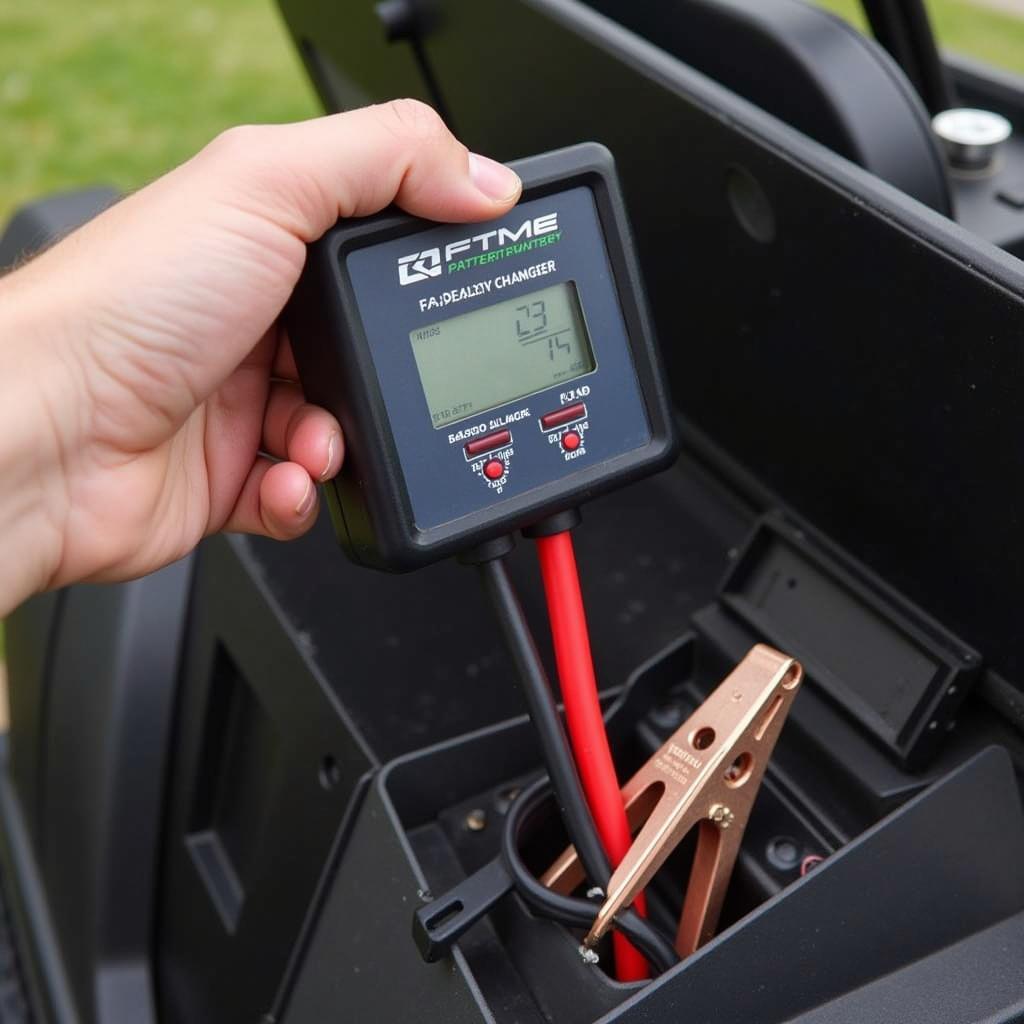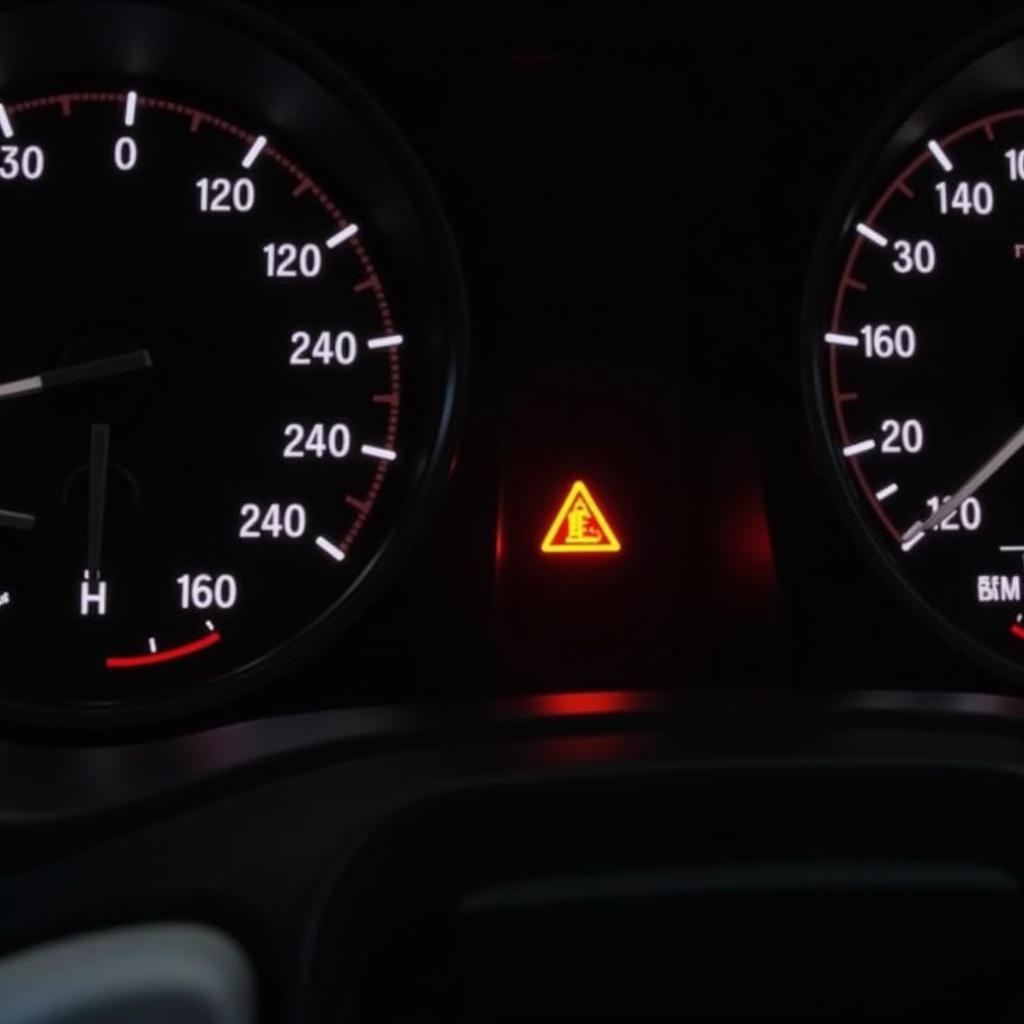New golf cart batteries draining quickly can be a frustrating experience. You’ve invested in new power, expecting improved performance and longevity, only to find yourself constantly recharging. This article dives into the common causes of this issue, providing practical troubleshooting steps and solutions to help you get back on the course.
Similar to ezgo-rxv-charging-problems, rapid battery drain can stem from various issues. Let’s explore why your new golf cart batteries might be losing their charge prematurely and what you can do about it.
Why Are My New Golf Cart Batteries Draining So Fast?
Several factors can contribute to rapid battery drain in new golf cart batteries. Understanding these potential culprits is the first step towards a solution.
Faulty Batteries or Installation
Sometimes, new batteries can be defective from the start. Internal damage or manufacturing defects can lead to premature discharge. Incorrect installation, such as loose connections or reversed polarity, can also cause rapid drain. Always double-check the manufacturer’s installation instructions and consider professional installation if you’re unsure.
Excessive Load
Overloading your golf cart can strain the batteries and deplete them quickly. Carrying too many passengers, hauling heavy loads uphill, or using accessories like powerful sound systems or lights can all contribute to increased energy consumption. Be mindful of your cart’s weight capacity and limit unnecessary accessories usage.
Incorrect Charger Settings
Using the wrong charger or incorrect charger settings can damage your new batteries and cause them to drain faster. Ensure your charger is compatible with your battery type and voltage. Improper charging can lead to overcharging or undercharging, both of which negatively impact battery life and performance.
 Golf Cart Battery Charger Connection
Golf Cart Battery Charger Connection
Parasitic Drain
A parasitic drain occurs when a component continues to draw power even when the golf cart is turned off. This can be caused by faulty wiring, malfunctioning accessories, or even a faulty ignition switch. Identifying and eliminating parasitic drains is crucial for preserving battery life.
Corroded Terminals
Corrosion on the battery terminals can impede the flow of electricity, causing increased resistance and faster battery drain. Keeping your battery terminals clean and free of corrosion is essential for optimal performance.
Troubleshooting Your Golf Cart Battery Drain
Now that we’ve identified the potential causes, let’s delve into some practical troubleshooting steps.
Check the Battery Water Levels
For flooded lead-acid batteries, ensure the water levels are correct. Low water levels can negatively impact battery performance and longevity.
Inspect the Battery Terminals
Examine the battery terminals for corrosion. Clean them with a wire brush and baking soda solution if necessary. Apply a protective coating to prevent future corrosion.
Test the Charger
Verify that your charger is functioning correctly and using the appropriate settings for your battery type. Consult the charger’s manual for specific instructions.
Check for Parasitic Drains
Use a multimeter to check for parasitic drains. Disconnect the negative battery cable and connect the multimeter in series between the cable and the negative terminal. A reading higher than a few milliamps indicates a parasitic drain. Systematically disconnect components to identify the source of the drain.
Load Test the Batteries
A load test can determine the health of your batteries. A weak or faulty battery will show a significant voltage drop under load.
Solutions for Golf Cart Battery Drain
Based on the troubleshooting steps, here are some solutions to address the issue:
Replace Faulty Batteries
If a battery is defective, it needs to be replaced. Contact the battery manufacturer or retailer for warranty information.
Reduce the Load
Minimize the weight carried by your golf cart and limit the use of power-hungry accessories.
Adjust Charger Settings
Ensure your charger is set correctly for your battery type and voltage. Consult the charger’s manual for specific instructions.
Repair or Replace Faulty Components
If you identify a parasitic drain, repair or replace the faulty component causing the drain.
Maintain Clean Battery Terminals
Regularly inspect and clean your battery terminals to prevent corrosion.
Conclusion
Dealing with new golf cart batteries that drain quickly can be a hassle, but with proper troubleshooting and solutions, you can restore their performance. By addressing the underlying causes, you can enjoy longer rides and extend the lifespan of your batteries. Regular maintenance and careful usage practices are key to keeping your golf cart running smoothly.
FAQ
- How long should new golf cart batteries last? With proper care and maintenance, new golf cart batteries can last between 3 and 5 years.
- What is the best way to store golf cart batteries? Store them in a cool, dry place, fully charged, and disconnected from the charger.
- Can I use a car battery charger for my golf cart? No, using a car battery charger can damage your golf cart batteries. Always use a charger specifically designed for deep-cycle batteries.
- How often should I check my golf cart battery water levels? Check them every few weeks, especially during periods of frequent use.
- What are signs of a bad golf cart battery? Signs include slow acceleration, reduced range, and rapid draining.
- How can I prevent my golf cart batteries from draining quickly? Avoid overloading the cart, use the correct charger settings, and maintain clean battery terminals.
- Should I disconnect my golf cart batteries when not in use? Disconnecting the negative cable can help prevent parasitic drains, especially during long periods of storage.


